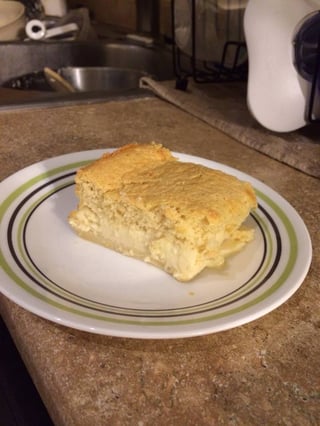Magic Cake has a seemingly simple batter, that is mixed and baked as a single entity. (See link for the full recipe and method). When it is baked, it separates into three distinct layers:
- A dense bottom layer
- A custard middle layer
- A cakey top layer
 (Photo and baking by Rfusca)
(Photo and baking by Rfusca)
What is the science behind this? How does the single batter separate and create three separate and well defined layers?
As many photos of various magic cakes show (such as those at the recipe author's Part II, page), there is a definite edge effect on the layers, so it is not simply separation of components due to differing density.
